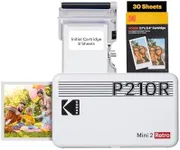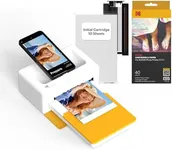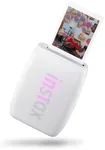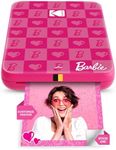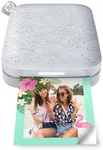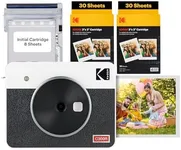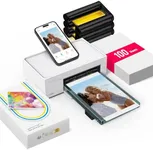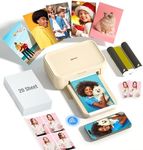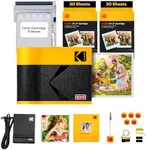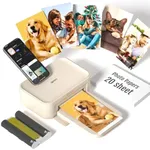Buying Guide for the Best Digital Photo Printer
Choosing the right digital photo printer can be a rewarding experience, allowing you to bring your digital memories to life with high-quality prints. To make the best choice, it's important to understand the key specifications and how they align with your needs. Here are the main factors to consider when selecting a digital photo printer.Print ResolutionPrint resolution, measured in dots per inch (DPI), determines the level of detail and clarity in your printed photos. Higher DPI values mean more detailed and sharper images. For casual photo printing, a resolution of 300-600 DPI is usually sufficient. However, if you are a professional photographer or need gallery-quality prints, look for printers with 1200 DPI or higher. Consider your need for detail and the size of prints you plan to produce when choosing the right resolution.
Print SizePrint size refers to the maximum dimensions of the photos a printer can produce. Common print sizes include 4x6 inches, 5x7 inches, and 8x10 inches. Some printers can handle larger formats like 13x19 inches or even wider. If you primarily print standard photo sizes for albums or frames, a printer that supports 4x6 or 5x7 inches will suffice. For larger prints, posters, or professional portfolios, look for a printer that can accommodate larger paper sizes.
Ink TypeDigital photo printers use different types of ink, such as dye-based or pigment-based inks. Dye-based inks are known for their vibrant colors and smooth gradients, making them ideal for everyday photo printing. Pigment-based inks, on the other hand, offer better longevity and resistance to fading, which is important for archival-quality prints. Choose dye-based inks for bright, colorful prints and pigment-based inks for long-lasting, professional-quality photos.
Connectivity OptionsConnectivity options determine how you can send photos to the printer. Common options include USB, Wi-Fi, Bluetooth, and memory card slots. USB connections are reliable and straightforward, while Wi-Fi and Bluetooth offer the convenience of wireless printing from various devices, including smartphones and tablets. Memory card slots allow direct printing from your camera's memory card. Consider your preferred method of transferring photos and choose a printer with the appropriate connectivity options.
Print SpeedPrint speed, measured in pages per minute (PPM) or seconds per photo, indicates how quickly a printer can produce prints. Faster print speeds are beneficial if you need to print large volumes of photos in a short time. For occasional home use, print speed may not be as critical, but for professional or event photography, a higher print speed can save valuable time. Assess how often and how many photos you plan to print to determine the importance of print speed for your needs.
Paper HandlingPaper handling refers to the types and sizes of paper a printer can accommodate, as well as the capacity of its paper trays. Some printers have multiple trays for different paper types, such as glossy photo paper and plain paper. Others may offer manual feed options for specialty papers. If you plan to print on various paper types or need to switch between sizes frequently, look for a printer with versatile paper handling capabilities. Ensure the printer can handle the paper sizes and types you intend to use.
Color AccuracyColor accuracy is crucial for producing true-to-life prints that match the colors of your digital images. Printers with advanced color management systems and multiple ink cartridges (such as those with additional color inks beyond the standard CMYK) tend to offer better color accuracy. If precise color reproduction is important for your work, such as in professional photography or graphic design, prioritize printers known for their color accuracy. For casual printing, standard color accuracy may be sufficient.
